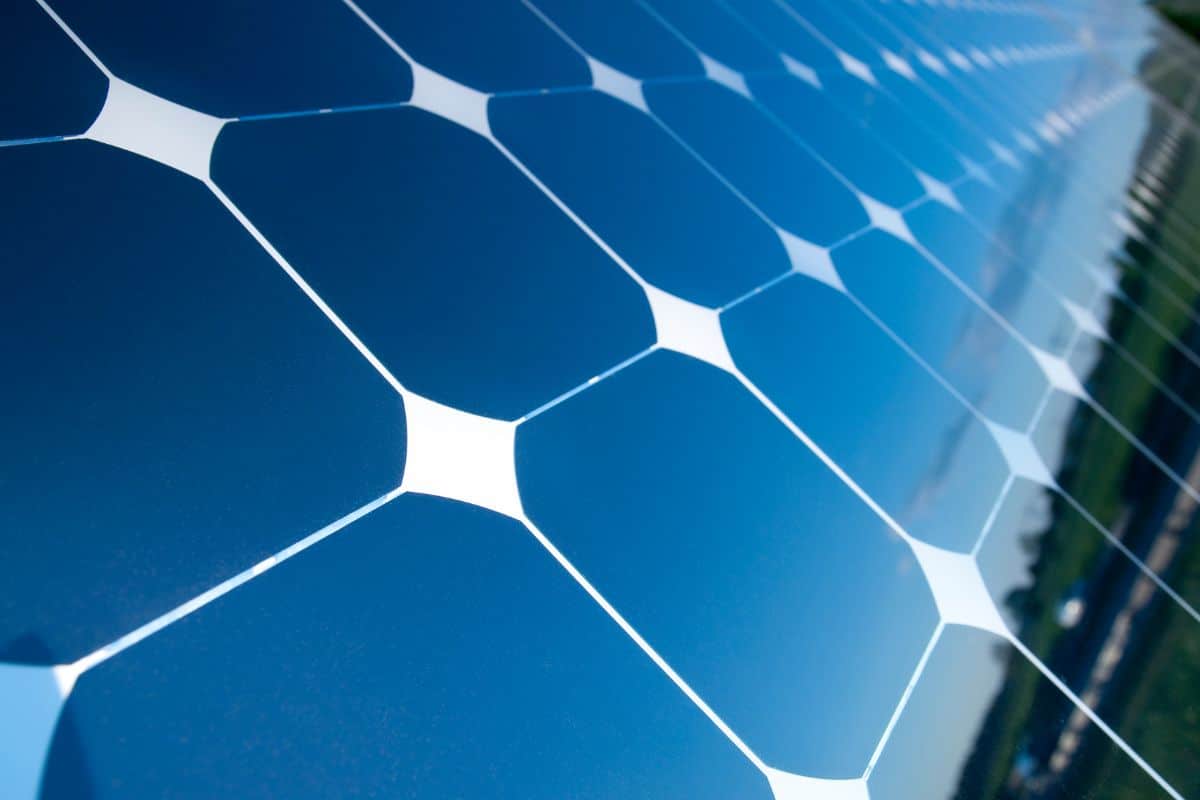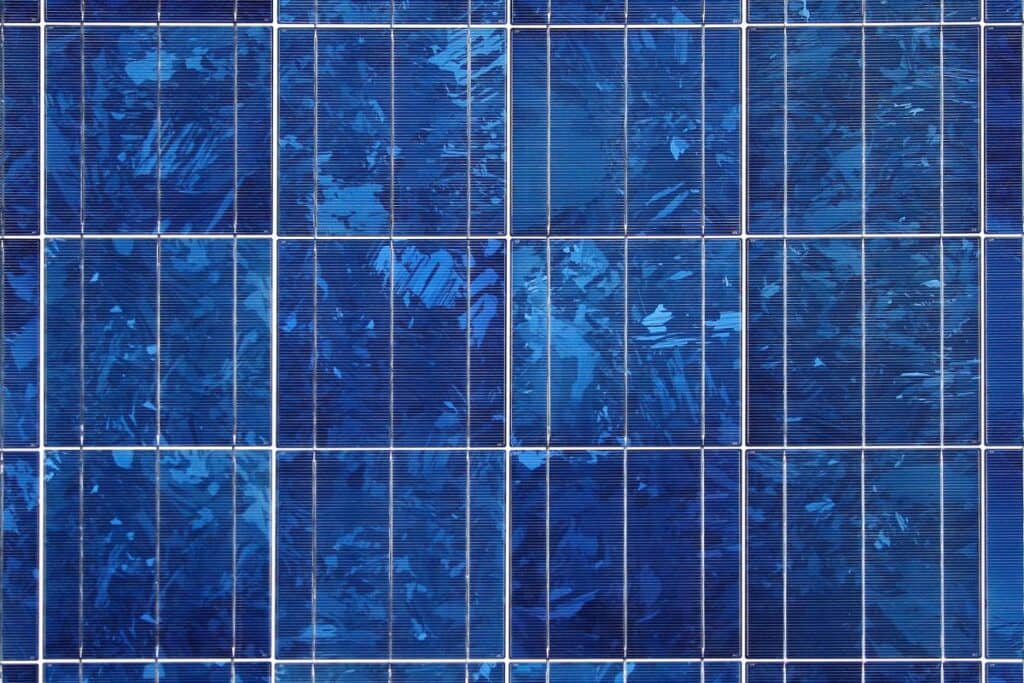Solar shingles or tiles are all the rage right now. In this article, we’ll delve into what these eco-friendly powerhouses are and why they might be your next home improvement project.
So what are solar shingles or solar tiles?
Solar shingles, also known as photovoltaic shingles or solar tiles, are innovative roofing materials that have the dual purpose. They protect your home from the elements and generating electricity. They are designed to resemble conventional roofing tiles but are made of thin-film solar cells that capture sunlight and convert it into usable energy.
This technology allows homeowners to turn their entire roof into a solar power generator. Solar shibngles provide an aesthetically pleasing and discreet solution for solar energy generation.

In the world of renewable energy, solar tiles are the new kids on the block, but they’re rapidly gaining popularity.
Unlike traditional solar panels that are mounted on top of roofing, solar tiles are part of the roof itself.
Solar shingles are a form of Building Integrated Photovoltaics (BIPV). That means the solar energy-generating components are integrated into the building’s structure, rather than added on.
Let’s dive deeper to understand why solar tiles are a game-changer in the solar industry.
Solar Tiles vs Traditional Solar Panels
You might be wondering, why choose solar tiles over traditional solar panels? There are several factors that set these two apart.
First, let’s talk aesthetics.
Solar tiles are designed to blend in with traditional roofing materials, giving your home a sleek, uniform appearance.
If you’re not a fan of the bulky look of traditional solar panels, solar tiles can be a more attractive option.
They come in various styles, mimicking the look of different roofing materials, like asphalt or slate.
Secondly, solar tiles offer an integrated solution.
Traditional solar panels are mounted on top of your existing roof, whereas solar tiles are your roof.
This makes them a great option for new builds or if your existing roof needs replacement. It also eliminates the need for bulky mounting systems and reduces installation time.
Thirdly, solar tiles are often more durable than traditional solar panels.
Solar shingles are designed to withstand harsh weather conditions. They are less susceptible to damage because they sit flush with the roof, reducing wind resistance.
When it comes to durability, solar shingles or tiles rule the roost.
Withstanding the Elements: The Durability of Solar Shingles
Durability is a key factor that determines whether a product can stand the test of time (and weather!). So, let’s find out just how tough solar tiles really are.
Solar shingles are integrated into your roof and therefore must withstand the same elements as any roofing material. Unlike traditional solar panels, they aren’t installed on top of the roof. They become part of the roof itself, which offers several advantages in terms of durability.
First, because solar tiles are incorporated into the roof, they have a lower profile than traditional solar panels.

This makes them less vulnerable to wind damage. Conventional solar panels, being elevated, can create wind resistance. That might make them less stable in strong winds or hurricane-prone areas.
Solar tiles, on the other hand, sit flush with the rest of the roof. That provides less wind resistance and creates a more streamlined profile.
This aspect alone enhances their durability and the likelihood they will stay intact during extreme weather events.
Solar Shingle Strength
Secondly, solar tiles are often made with tempered glass, which is significantly stronger and more resilient than the standard glass used in traditional solar panels.
This makes them resistant to hail damage, a common concern with solar installations.
Let’s put it in perspective: many solar tile manufacturers claim their products can withstand hailstones of up to an inch in diameter traveling at speeds of up to 70 miles per hour.
This resistance to hail damage means you don’t need to worry about sudden storms damaging your solar energy investment.
Moreover, solar tiles are designed to endure heavy loads, which can be beneficial in areas prone to heavy snowfall.
They can support the weight of accumulated snow and are not prone to damage from freezing and thawing cycles.
Another factor adding to their durability is the absence of mounting equipment. Traditional solar panels need mounts and racking systems to stay in place.
These additional components not only add complexity to the installation process but can also be potential weak spots over time due to weathering and mechanical failure. With solar tiles, these potential points of failure are eliminated.
Heat resistance is another factor in the durability of solar tiles.
The tiles are designed to withstand high temperatures and prolonged exposure to sunlight without degrading.
They are also built to resist moisture penetration, which can protect against leaks and water damage to the roof.
The Lifespan of Solar Shingles
In terms of lifespan, solar tiles are designed to last as long as conventional roof tiles, typically around 30 years.
They maintain their performance over the years, making them a long-term investment for homeowners interested in sustainability and reducing energy costs.
However, it’s essential to note that while solar tiles are highly durable, they are not invincible.

As with any part of a building’s exterior, damage can occur, and regular maintenance and inspections are necessary to ensure your solar tiles remain in top working condition.
In summary, solar tiles offer impressive durability due to their resistance to wind, hail, heavy loads, and heat, their moisture-proof design, and their long lifespan.
These factors make them an excellent option for homeowners seeking a solar energy solution that can stand up to the elements and provide a long-term return on investment.
While the upfront cost might be higher, the long-term durability and minimal maintenance of solar tiles make them a smart choice for many homeowners.
However, there are also some downsides.
Let’s dig into the disadvantages of solar shingles now.
The Disadvantages of Solar Shingles: Weighing the Cons:
Solar shingles bring a stylish, integrated look to solar energy systems, and they’re undoubtedly a top-tier choice for durability. However, it’s essential to have a clear view of the whole picture when considering them for your home.
Let’s delve into some of the potential downsides of solar tiles.
One of the most significant drawbacks of solar tiles is their cost.
As a newer, more technologically advanced product, solar tiles tend to come with a heftier price tag than traditional solar panels.
Part of this cost is due to the complexity of the installation process, which requires specialized knowledge and can be more time-consuming than mounting traditional panels.
A full solar tile roof can cost two to three times more than a roof with conventional solar panels.
This means that the initial investment for a homeowner is much higher, which can make solar tiles a less viable option for those on a tight budget.
Next, let’s talk about efficiency. Solar tiles, though advanced and aesthetically pleasing, do not yet match the efficiency of conventional solar panels.
Standard solar panels currently convert sunlight into electricity at a rate of 15-20%. In contrast, solar tiles often fall in the 10-15% range.
The gap may not seem significant, but it does mean that a house using solar tiles will require more surface area covered to generate the same amount of power as one using traditional panels.
In some cases, your roof might not have enough space to install the number of solar tiles necessary to match your energy consumption.
The flexibility of Solar Shingles
Thirdly, although solar tiles blend seamlessly into the roof, they offer less flexibility than traditional solar panels.
Solar panels can be angled and positioned to maximize sun exposure. Solar shingles on the other hand lie flat on the roof, which may not always be at the optimal angle.
This could potentially affect the amount of sunlight they capture, and subsequently, the amount of electricity they can generate.
There’s also the consideration of roof replacement.
If your roof needs to be replaced in the near future, you might find that the cost of replacing the roof and installing solar tiles at the same time is higher than installing traditional solar panels on the new roof.
Additionally, solar shingles are designed to be durable. Repairs and replacements can be more complex and costly than with traditional panels.
If a solar tile becomes damaged or stops working, the process of replacing it is more involved than simply swapping out a solar panel.
Lastly, as solar tiles are a relatively new product. There are fewer manufacturers and installers available, limiting your options when it comes to choosing a system that suits your needs and budget.
While solar tiles present an attractive, durable, and innovative solution for solar power, they also come with drawbacks.
Their higher cost, lower efficiency, reduced flexibility, potential roof replacement complications, and more complex repair processes are all aspects to consider.
However, if budget is not a primary concern, and you value aesthetics and a streamlined design, solar tiles could still be an excellent choice for your home.
As with any significant investment, it’s all about weighing the pros and cons and deciding what is most important to you.
Are Solar Shingles Right for You?
Determining whether solar tiles are the right choice for your home will depend on a few factors.
Consider your budget, the age and condition of your existing roof, the aesthetic you’re going for, and your local climate.
Financially, the upfront costs of solar tiles can be higher than traditional solar panels. However, if you are building a new house or need to replace your roof, the cost becomes more competitive as you’re combining the cost of a new roof and solar installation into one.
If you live in a neighborhood with strict homeowner association rules or in a historical district, solar tiles might be the perfect solution because they blend seamlessly with traditional roofing materials.
Lastly, consider your local climate. Solar tiles can withstand harsh weather conditions better than traditional panels. That makes them a smart choice if you live in an area with heavy snowfall or high winds.
Solar tiles are an exciting innovation in the field of renewable energy, offering an integrated, aesthetically pleasing, and durable solution for harnessing solar power.
As solar technology advances and becomes more cost-effective, we can expect to see more and more roofs pulling double duty as power generators in the near future.
